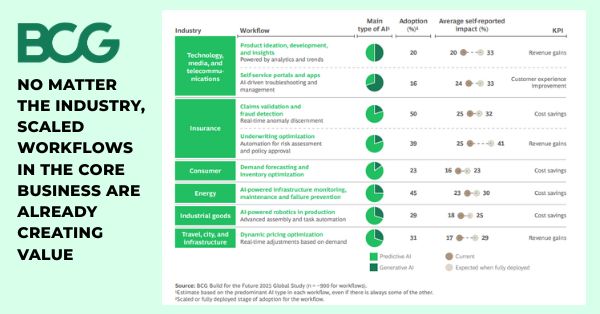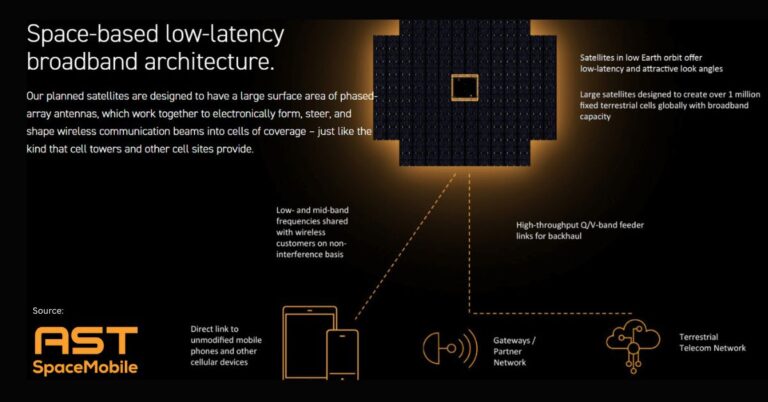The AI Value Gap: A Strategy Imperative, Not a Tooling Issue
Fresh research shows a small cohort of “future-built” companies converting AI into material P&L impact while most firms lag despite sizable spend.
AI Maturity Scorecard: 5% Leaders, 35% Scaling, 60% Stalled
BCG’s 2025 assessment of 1,250 senior executives finds only 5% of companies have the capabilities to consistently generate outsized AI value, with 35% scaling and beginning to see benefits, and a full 60% reporting little to no financial impact to date.
Leaders moved early, built repeatable capabilities, and are now compounding returns—posting around 1.7x revenue growth, 1.6x EBIT margin, and 3.6x three-year TSR versus laggards.
The investment flywheel is clear: future-built firms plan to lift IT spending and shift a larger share to AI, resulting in roughly double the revenue uplift and 40% more cost reductions than laggards in the functions where they apply AI by 2028.
Agentic AI Is the New Competitive Divider
Autonomous, goal-driven agents already account for an estimated 17% of AI value this year and are projected to approach 30% by 2028, with future-built firms allocating a meaningful slice of AI budgets to agents and adopting them at roughly 3x the rate of scalers.
The implication: the next wave of differentiation is not just generative assistance, but systems that can reason, coordinate tools and APIs, and execute multistep work with minimal human intervention.
Why AI Now Matters for Telecom, 5G, and Edge
Telecommunications sits among the sectors furthest along in AI maturity, and the economics of networks make the gap especially consequential.
Network Economics Require Compounding AI Returns
Traffic growth, rising energy costs, and flat ARPU mean operators need structural efficiency, not incremental automation; leaders are applying AI to RAN optimization, energy management, field force productivity, and predictive maintenance, often via O-RAN RIC xApps/rApps, TM Forum AIOps/Autonomous Networks frameworks, and ETSI-aligned analytics.
Agentic systems can coordinate planning and rollout tasks across spectrum, backhaul, and site acquisition, accelerate fault-to-resolution workflows across OSS/BSS, and dynamically optimize network slices for enterprise SLAs at the edge.
Revenue Is Shifting to AI-Powered Customer and Enterprise Offers
Seventy percent of AI’s value potential concentrates in core functions like sales and marketing, pricing, supply chain, and manufacturing—translating in telecom to hyper-personalized offers, next-best action in care, churn prevention, and dynamic pricing for B2B connectivity, security, and edge services.
For enterprise 5G and IoT, agents that orchestrate APIs (e.g., via GSMA Open Gateway), slice exposure, and security policies can unlock premium SLAs and new partner revenue models.
Ecosystems Will Accelerate—or Limit—Your AI Trajectory
Leaders tap supplier ecosystems to accelerate capability build: hyperscalers for model hosting and MLOps, specialized ISVs for RAG and observability, chip vendors for inference at the edge, and open alliances like O-RAN and Linux Foundation AI & Data to shorten time to value.
The lagging 60% often underinvest in data readiness, safety, and operating-model change, turning pilots into stranded assets and elongating payback cycles.
Agentic AI: Scaling from Pilots to Production
Treat agents as a scale enabler layered on proven use cases, not as a shortcut around foundational work.
Where Agentic AI Delivers Early Wins
High-value candidates include L3/L2 assurance workflows, zero-touch site deployment checklists, care-to-field coordination, B2B quote-to-order-to-activate, and marketing experimentation loops.
Agents excel when they can access reliable tools and APIs—ticketing, network analytics, knowledge graphs, policy engines—under strong guardrails and human oversight.
Operating Model Shifts for Agentic AI
Agents change work design: roles shift from execution to supervision and exception handling, governance extends from model to process, and KPIs evolve from task completion to end-to-end outcome quality, safety, and compliance.
Expect to redesign controls for audit, hallucination containment, PII handling, and regulatory requirements such as lawful intercept and service availability obligations.
Target the Highest-Value AI Use Cases
Focus investment on the functions and outcomes that concentrate most of AI’s value potential.
Prioritize Core Functions; Use IT as the Enabler
BCG’s data shows about 70% of value in core functions; in telecom that maps to network build/operate, commercial growth, supply chain, and pricing, with IT contributing roughly an eighth of the total as the platform owner.
Prioritize use cases with measurable P&L impact: RAN energy savings, spectrum efficiency, truck-roll avoidance, digital sales conversion, and revenue assurance—then standardize patterns for reuse across opcos and markets.
Data Foundations Dictate Speed, Safety, and Scale
Winning programs invest early in fit-for-purpose architectures: governed data products, vectorized knowledge, policy-aware tool orchestration, and observability from prompt to outcome.
For telcos, align with TM Forum Open APIs, 3GPP data models, and a clean separation between system-of-record and system-of-engagement to keep latency, lineage, and compliance in check.
The AI Leader’s Playbook
The companies pulling ahead apply a consistent, cross-industry approach that others can adopt now.
Lead, Reshape, and Measure Outcomes
Set a multi-year, board-backed ambition with budget to match; select a handful of value pools, attach hard targets, and instrument outcomes beyond productivity anecdotes.
Scale through an AI-first operating model built on human-machine teaming, not siloed pilots; codify patterns, platform services, and reusable guardrails.
Build Talent and Architecture at the Core
Anticipate new roles—agent designers, prompt engineers, evaluators, AI product managers—and upskill domain experts; complement with partners where speed matters.
Build a modular stack: secure data layer, feature store, vector DB, model registry, evaluation and safety tooling, and a policy-aware agent framework integrated with OSS/BSS and network APIs.
Your 180-Day AI Action Plan
Convert intent into momentum with a short, focused plan tied to financial outcomes.
Assess, Prioritize, and Fund to Reach Production
Run a quick capability baseline against strategy, tech, people, and outcomes; pick two to three use cases with line-of-sight to revenue uplift or cost takeout, and ring-fence funding to productionize, not just pilot.
Design for agents even if you start with copilots: define tool catalogs, policies, and human-in-the-loop checkpoints; modernize data contracts and evaluation pipelines; and commit to quarterly value reviews to reinvest gains and expand the lead.









































